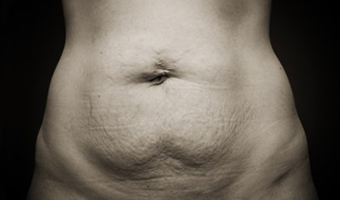33 Methuen Ave.
Lower level
Toronto ON M6S 1Z7
 After giving birth, many women worry about fitting into their pre-baby jeans, and regaining the flat stomach they may have once had. They find themselves discouraged when, even months and months later, they have a poochy stomach they just can’t seem to get rid of, no matter how many runs on the treadmill and crunches in the gym. Let’s talk about mummy tummy - that puffiness that just won’t go away.
After giving birth, many women worry about fitting into their pre-baby jeans, and regaining the flat stomach they may have once had. They find themselves discouraged when, even months and months later, they have a poochy stomach they just can’t seem to get rid of, no matter how many runs on the treadmill and crunches in the gym. Let’s talk about mummy tummy - that puffiness that just won’t go away.
Most often this pooch is caused by Diastasis Recti Abdominus. It is a bit of a mouthful and a common condition for postnatal women. With a DRA, the muscles of the rectus abdominus have become separated; these are the outer-most abdominal muscles and they can become strained by the growing uterus. A separation, of varying widths, is common amongst child-bearing women, but the condition can affect men as well. The critical thing is not how far apart the muscles have gotten, but can you develop tension across the midline, when you engage your core.
The left and right rectus abdominus muscles are connected by tissue known as the linea alba. When a forceful pressure pushes against the muscles, the tissue is strained, which can show as the protrusion or pooch you notice in the mirror. This will occur when tension is not generated during the activity. Other effects include back pain, limited support for the internal organs and the risk of hernia, as the muscles are weakened and compromised, not allowing them to do their job of supporting the back and organs. This is a condition you will want to fix, not just to look better in a bathing suit, but to ensure the integrity of your core muscles - literally the core of your every movement.
What Can I do if I Have Diastasis Recti?
All women should see a pelvic floor physiotherapist during pregnancy, and at approximately 2 and 6 weeks postpartum. It is a good idea to have an assessment done of the inner and outer muscles of the core, including the pelvic floor muscles. At this time, a physiotherapist can test to see if you have a diastasis, including determining the integrity of the linea alba. Your physiotherapist will recommend a series of exercises you can do at home to improve the muscle and tissue, and to close the gap. It is possible to improve the integrity of the muscle and tissue, as well as the look of your stomach. You should not do any exercises that compromise the functioning of your core, and while you build your strength back up, you should avoid moves that require significant core strength - such as the plank move in yoga. Exercises we recommend you avoid entirely are crunches and pilates v-sits; these moves create too much intra-abdominal pressure.
You don’t have to live with the pooch, or with a $10,000 medical bill from a tummy tuck operation. It is possible to re-tone the body after-birth, and most importantly to maintain and regenerate the integrity of the muscles that support us in everything that we do - from breastfeeding that babe, to lifting her up through-out the ages.
Pregnant women can work to prevent a diastasis by building core strength in pregnancy. Take a look at the Bellies Inc. Exercise System as a great tool.